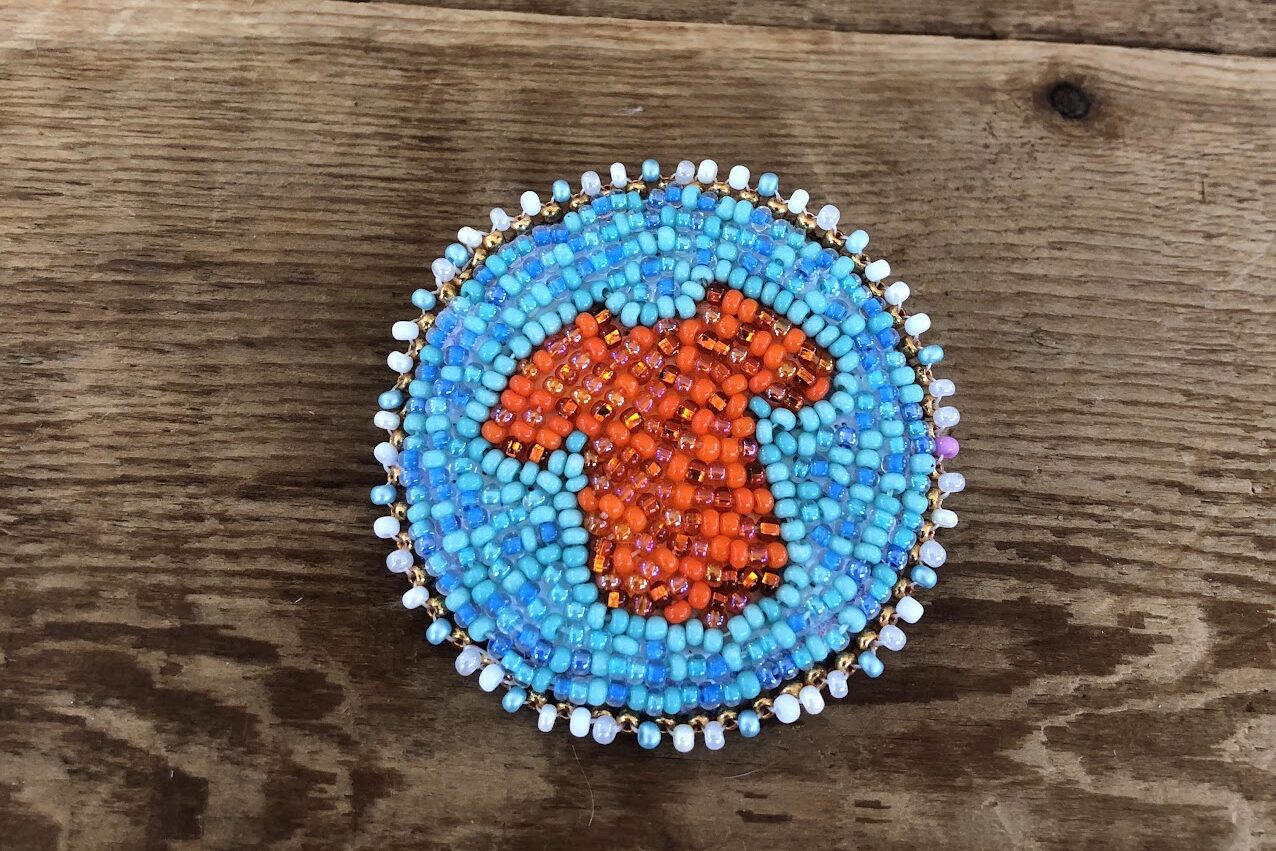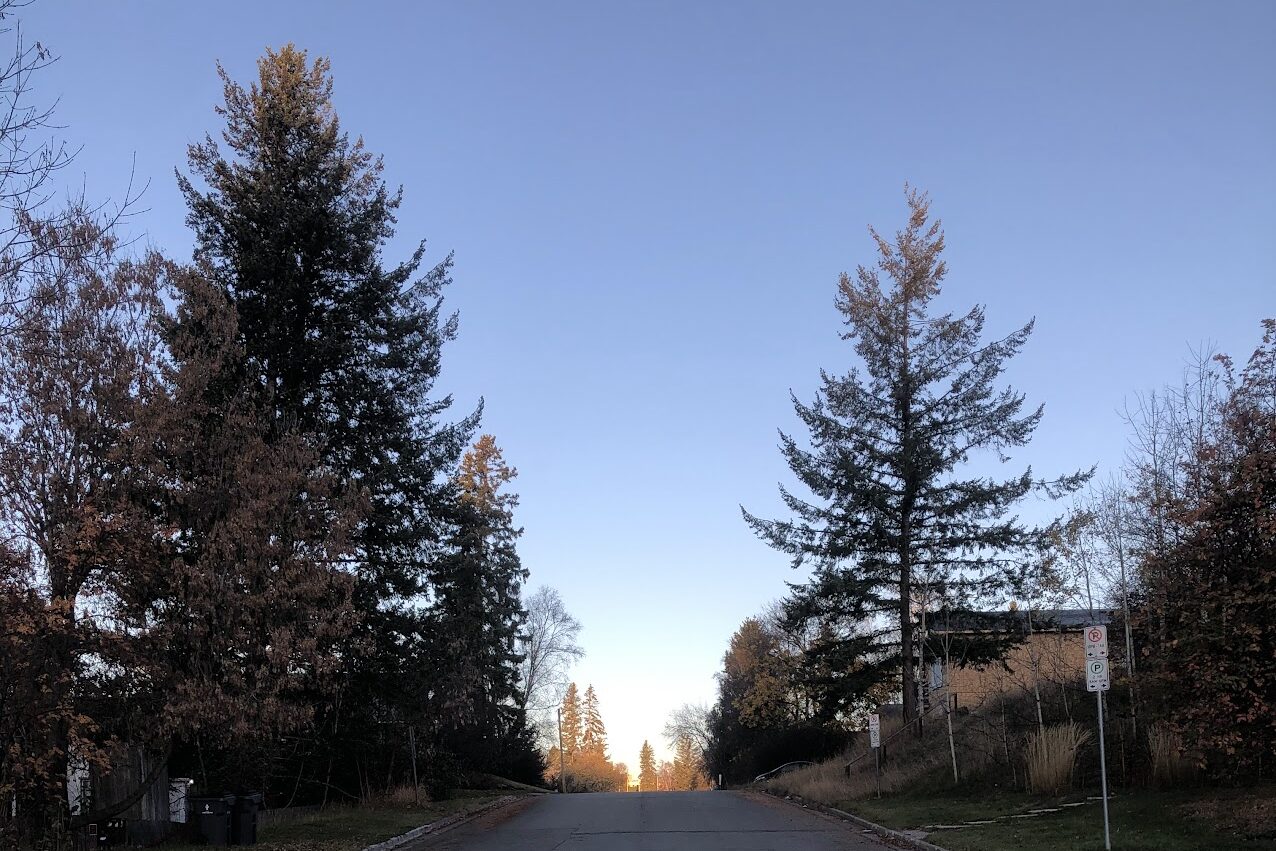I learned a Métis style of Indigenous beadwork from Laurie Todd during a Pro-D Day workshop while I was employed as a teacher at Duchess Park Secondary School this last school year, 2022/2023. I had met Laurie during the Winter Craft fair in Prince George, when my sister and were admiring her work and started chatting with her about her work, connecting with Indigenous identity and culture, and more! We found out she was working at the School District with the Aboriginal Education department and since my sister and I had both expressed our desires to learn beadwork, something only my sister had attempted, at this point, Laurie mentioned that she could come to Duchess Park to teach the Métis beading style she had learned. It was a lovely workshop and I have been beading on my own time ever since. So, I was very excited about Noelle Pepin coming into our class today.


Beaded Orange Shirt Pin by Isabelle Côté
In the second semester of my year at Duchess Park, my students learned to Métis bead, and we explored some of the known history and origins of seed beading in First Nations culture. In retrospect, there are SO many things I would change and improve upon and do differently. However, I was working in a high school at the time, and since I am currently studying to be an elementary school teacher, the kind of motor skills, patience, and learning required to complete the beadwork that I currently practice are a BIG, difficult ask for elementary year students. I didn’t realize that I had somewhat abandoned the idea of being able to bead as an Elementary school teacher until 8-bit code beading with our cohort. Thank you, Noelle and Christine!
I still may not be able to perform the kind of embroidery-style seed beading that I practice on my own. However, a door has been opened for me into a world where beading can be incorporated into learning in so many ways and across a multitude of curricula! Moreover, the feedback that my peers provided today about their experience of 8-bit code beading in their two-word choices for sharing with the class really suggests that the benefits of incorporating beading in the class would be manifold! For example, words chosen and given in relation to the experience included: connection, grounding, focus, patience, mindfulness, creativity, community, and construction, among others of a similar positive nature. Thus, I not only feel that there is a world of beadwork learning opening up to me with every moment I take to explore it, revealing more opportunities with every additional bit of energy I put into contemplating and researching it. I also feel that the benefits of incorporating beadwork into my classroom would go beyond simply the academic advantage of practical and kinaesthetic learning. Beading is a mindful process that is medicine to the crafter/artist when they are present with the craft and attentive to their engagement with their project.
Some ideas I have, off the top of my head, of how to incorporate beading in the classroom after Noelle’s visit include using beads to:

Tell stories, where beads of different shapes and colours represent key parts of the narrative. Students should then string together a story and be able to retell it to others using their beaded story as a memory tool / visual aid. The beadwork also represents how different kinds of artifacts reveal history and story.
Photo by Cottonbro Studio on Pexels.

Count to 10, 20, or more, with a combination of numbered beads and unnumbered beads, where students have to properly arrange the sequences of beads (numbered and unnumbered) and properly name the unnumbered beads as they count out loud the sequence that they, and others, have made.
Photo by Digital Buggu on Pexels.

Represent the seasons with lettered beads that spell out the first three letters of each month, followed by a bead that represents the season of that month in Canada. The months should be strung in order, starting with January, but could loop into a bracelet or necklace to show that seasons are cyclical.
Photo by Sigmund on Pexels
